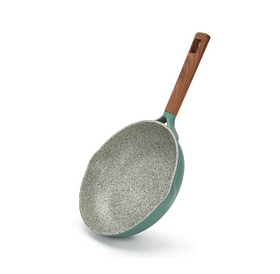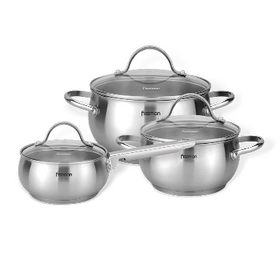
The Arab World's Favorite Spices
In the Arab world, food is an art form. It is a way of life. It is an expression of family and community and an outlet for creativity.
Spices have always been an important part of Arab cuisine. They give dishes flavor and aroma and add color and texture to the final product. Many dishes don't taste complete without them. As such, Arabs often use spices in abundance.
Here are some of the most popular spices in Arab cuisine:
Za'atar

Za'atar is a Middle Eastern spice blend made from toasted sesame seeds, dried herbs, and spices. It is the world's most popular herb-and-spice blend, with a long history of use in the Arab world and beyond.
The name derives from the Arabic word "za'atar" meaning "thyme." Today, however, za'atar often contains other herbs as well. In Turkey, for example, it tends to contain oregano, thyme, and marjoram, while in Lebanon, it will have sumac (a very tart red berry) instead of thyme.
But why do we love it so much? Here are five reasons:
- It's a great source of iron.
- It's super flavorful—and versatile. You can add it to any dish to give it a little kick or use it as the main ingredient in your recipe.
- It goes with everything. From veggies to meat to fish to eggs, za'atar will make your food taste amazing.
- You can buy it in bulk at any store or online—and since it keeps forever (as long as you store it correctly), you'll never run out!
- Did we mention how delicious it is?
Sumac

The word "Sumac" is derived from the Arabic word "summaq," which means "to sprinkle." Sumac berries are dried, ground into a powder, and sprinkled on food. The flavor is a bit tangy and tart, with a hint of lemon. People often use it as a topping for salads, seafood, and rice dishes.
In addition to adding flavor, sumac has health benefits too. It's an antioxidant that can reduce cholesterol levels and prevent blood clots by thinning the blood.
Sumac has recently become popular in the United States after being featured on several popular cooking shows.
Turmeric

Turmeric, or "Haldi" in Hindi and Urdu, is a popular spice in the Arab world that has been used for thousands of years. Curcumin, the bright yellow pigment in turmeric, gives the spice its distinctive color, unique flavor, and medicinal properties.
You can use turmeric to add color and flavor to everything from rice and curry to soups and stews.
Turmeric is also known for its health benefits. Studies have shown that regular spice consumption can help reduce inflammation in the body and lower cholesterol levels. Researchers have also found that it boosts brain functions by improving cognitive performance and preventing Alzheimer's disease.
Although turmeric has long been used as an ingredient in traditional Indian cuisine, it is currently gaining popularity among Westerners. Some people even consider it one of the most popular spices today.
Dukkah

Dukkah is a savory and slightly sweet blend of nuts, herbs, and spices that originated in Egypt. The word "dukkah" means "to pound" in Arabic, and the ingredients are ground together with a mortar and pestle.
People typically make it from sesame seeds, hazelnuts, pistachios, coriander, cumin, salt, and pepper. This can be eaten on its own as a snack or used to season other dishes like hummus or grilled vegetables. Dukkah is also an essential ingredient for making mujaddara (rice with lentils), popular throughout the Middle East.
Black lime

Black lime (loomy) is a versatile ingredient in Arab cuisine. People use it in savory dishes, desserts, and drinks.
Black lime comes from the bark of the terebinth tree (Pistachia vera), which grows around the Mediterranean region. The tree's bark is dried, then ground into a powder. The resulting product has a reddish-brown color and an earthy aroma reminiscent of lemon rinds.
Add black limes to dishes just before serving or at the end of cooking time. They don't need to be cooked first before adding them to recipes.
NOTE: A little goes a long way: Black limes have a strong flavor that can easily overpower other ingredients if used in large quantities.
Cumin

Cumin is one of the most widely used spices in the Arab world, and for a good reason. It's a powerful spice that gives your food a rich and earthy flavor, with a hint of sweet and sour.
Cumin is used in all kinds of dishes, from lamb to chicken to vegetables. It's also commonly used as an ingredient in pickles and pastes. You can find it in many varieties—the most common being brown cumin, black cumin, white cumin, and green cumin.
In addition to being used in cooking and baking, cumin has been used for centuries as an essential part of traditional medicine.
Tandoori masala

Tandoori masala, an Indian blend of ground spices, is one of the most popular spice mixes in the Arab world. It's used to flavor chicken and vegetables and ingredients in many Indian dishes.
The blend has a slightly smoky flavor from cumin and coriander seeds and a warm, sweet flavor from ginger, cardamom pods, and cloves. Everyone who tries tandoori masala loves its distinctive taste, created by combining these spices.
Takeaway
What's your favorite spice? Sometimes the best cooking comes from the most unexpected sources.
The ingredients mentioned above are the spices most commonly used in the Arab world. They are combined to create various Arab dishes, each with its unique flavor and aroma. These dishes include Shish taouk, mandi (Arabian chicken stew), Harees, Mafroum, Dahiya, T'fina (tea), etc. Although each dish has its unique taste, they all share one thing in common: a perfectly blended combination of spices!
Sources:
The 10 Most Used Spices in Arabic Cuisine | Arabic Language Blog (transparent.com)
Healthy Spices and Seasonings found in your Arab Kitchen (arabamerica.com)



































Leave a comment